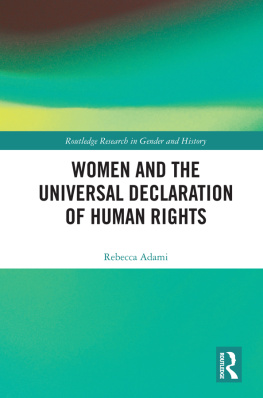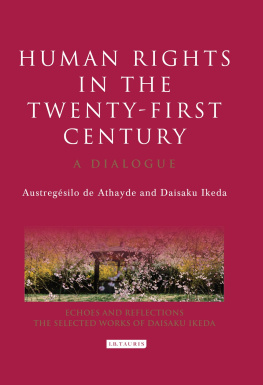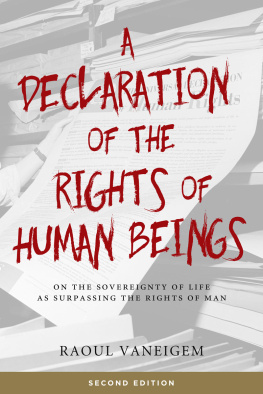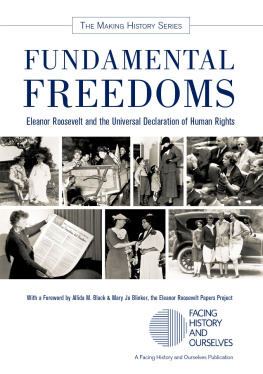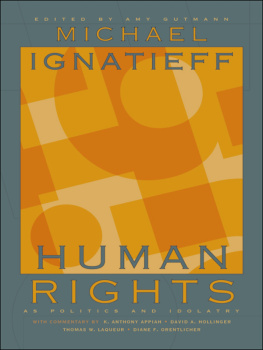HUMAN RIGHTS: INTERNATIONAL PROTECTION, MONITORING, ENFORCEMENT
Human Rights: International Protection, Monitoring, Enforcement
Edited by
JANUSZ SYMONIDES
University of Warsaw, Poland
 | UNESCO Publishing |
First published 2003 by Ashgate Publishing
Published 2017 by Routledge
2 Park Square, Milton Park, Abingdon, Oxon OX14 4RN
711 Third Avenue, New York, NY 10017, USA
Routledge is an imprint of the Taylor & Francis Group, an informa business
Copyright UNESCO 2003
The designations employed and the presentation of material throughout this publication do not imply the expression of any opinion whatsoever on the part of the UNESCO Secretariat concerning the legal status of any country, territory, city or area or of its authorities, or the delimitation of its frontiers or boundaries. The authors are responsible for the choice and the presentation of the facts contained in this book and for the opinions expressed therein, which are not necessarily those of UNESCO and do not commit the Organization.
All rights reserved. No part of this book may be reprinted or reproduced or utilised in any form or by any electronic, mechanical, or other means, now known or hereafter invented, including photocopying and recording, or in any information storage or retrieval system, without permission in writing from the publishers.
Notice:
Product or corporate names may be trademarks or registered trademarks, and are used only for identification and explanation without intent to infringe.
British Library Cataloguing in Publication Data
Human rights
Vol. 3: International protection, monitoring, enforcement
1.Human rights
I.Symonides, Janusz
323
Library of Congress Cataloging-in-Publication Data
Human rights : international protection, monitoring, enforcement / edited by Janusz Symonides.
p. cm.
Includes bibliographical references and index.
ISBN 0-7546-2301-7 -- ISBN 0-7546-2302-5 (pbk.)
1. Human rights. 2. International agencies. I. Symonides, Janusz.
K3240.H8575 2003
341.481dc21 2002043700
Typeset by Manton Typesetters, Louth, Lincolnshire, UK.
ISBN 13: 978-0-7546-2302-1 (pbk)
ISBN 13: 978-0-7546-2301-4 (hbk)
Contents
Zdzislaw Kedzia
Lee Swepston
Karl Josef Partsch and Klaus Hfner
Maxime Tardu
Hugo Caminos
Daniel D.C. Don Nanjira
Bahey el Din Hassan
Jean-Bernard Marie
William A. Schabas
Katarina Tomasevski
Michael Kirby
Laurie S. Wiseberg
The present volume Human Rights: International Protection, Monitoring, Enforcement is the third and last in the series which began in 1998 with Human Rights: New Dimensions and Challenges and continued in 2000 with Human Rights: Concept and Standards. Thus, the initiative aimed at the preparation and publication of the UNESCO manual for teaching human rights at the education level comes to a successful conclusion.
The international protection of human rights may be presented in many ways: from the point of view of organs, instruments, means of protection, or from the point of view of the protection of specific categories of human rights or persons belonging to vulnerable groups. This volume adopts a method which may be qualified as institutional. It gives, first, the presentation of the United Nations system of protection which may be seen as universal, followed by an analysis of regional systems.
Article 1 of the 1945 Charter of the United Nations lists among its purposes promoting and encouraging respect for human rights and for fundamental freedoms. It further provides that the General Assembly shall initiate studies and make recommendations for the purpose of assisting in the realization of human rights and fundamental freedoms (Article 13), whereas the Economic and Social Council may make recommendations for the purpose of promoting respect for, and observance of human rights and fundamental freedoms for all (Article 62). It also entitles the Economic and Social Council to set up commissions for the promotion of human rights (Article 68). This led to the establishment of the Commission on Human Rights which plays an important role in the protection of human rights.
Although the Charter can be seen as the starting point for the creation of the United Nations machinery and system of human rights protection, many years nevertheless elapsed before a system comprising reports, State complaints and individual communications, as well as establishing treaty bodies, came into being. It is enough to note that the Universal Declaration of Human Rights of 1948 did not foresee any procedure or organ to monitor its implementation.
The first chapter of this volume gives a comprehensive, holistic view of the United Nations human rights machinery and procedures, including the very important role played by the Commission on Human Rights, the treaty bodies and the Office of the United Nations High Commissioner for Human Rights. The United Nations system also comprises specialized agencies of which two, in the context of human rights protection, deserve special attention namely, the International Labour Organization (ILO) and the United Nations Educational, Scientific and Cultural Organization (UNESCO). The former because it is the oldest international organization, established in 1919, which developed, long before the United Nations, a very elaborate system of promotion and protection of human rights in its field of competence, including the monitoring of the implementation of conventions adopted by it. As far as UNESCO is concerned, it is worth noting that the Organization has created a permanent system of reporting on education for peace, human rights, democracy, international understanding and tolerance. It also instituted, in 1978, a special procedure for individual communications concerning alleged violations of human rights in UNESCOs fields of competence. The right to present communications does not result from any special human rights instrument adopted by the Organization; communications may be directed at any Member State of UNESCO. Although not mentioned specifically in this manual, we should not forget that other members of the United Nations system, such as the Food and Agriculture Organization (FAO), the World Health Organization (WHO), the United Nations High Commissioner for Refugees (UNHCR), the United Nations Development Programme (UNDP) and the United Nations Childrens Fund (UNICEF) play an important role in the promotion and protection of human rights.
of this volume is devoted to the presentation of regional systems of human rights protection. The trend towards closer political, economic and cultural cooperation has led to the creation of regional organizations and regional systems of human rights protection. It has already brought to life three regional systems: the first was created by the Council of Europe in 1950 based on the European Convention for the Protection of Human Rights and Fundamental Freedoms; the second was created in 1969 by the Organization of American States (OAS) on the basis of the American Convention on Human Rights; and the third was created in 1981 on the basis of the African Charter on Human and Peoples Rights, by the Organization of African Unity (now the African Union). The fourth regional system which may be qualified as in statu nascendi is that of the League of Arab States, dated 1994. The Vienna Declaration and Programme of Action of 1993 gives a positive evaluation of regional arrangements, noting that they play a fundamental role in the protection of human rights. Indeed, the regional systems reinforce, develop and advance the universal standards. Suffice it to observe that the Council of Europe has adopted nearly 30 regional human rights instruments including the European Convention for the Protection of Human Rights and Fundamental Freedoms and the European Social Charter.



